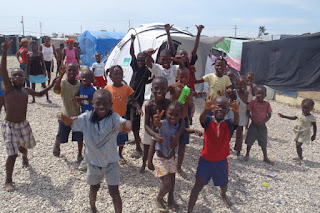Haiti culture people food and festivals
Haiti covers 10,714 square miles, which stand for (27,750 square kilometers) of the island known as Hispaniola, which it shares with the Dominican Republic. According to geographers' experts, Haiti is about three times the size of Cyprus Island but is slightly smaller than the U.S. state of Maryland. It is comprised of two peninsulas split by the Gulf of la Gonâve. The mountainous, nearly barren island of la Gonâve, which belongs to Haiti, rests in the center of the gulf. Haiti's portion of Hispaniola is significantly more mountainous than the rest of the island, with successive mountain chains running east to west on both peninsulas. The northern Massif du Nord is part of the island's backbone, which Dominicans call the Cordillera Central.
The southern peninsula boasts the Massif de la Hotte and Massif de la Selle. The highest peak, Pic la Selle, is located in the Massif de la Selle and rises to 8,793 feet (2,680 meters). The mountains are punctuated by hills and valleys, where most people live and work. The four main plains include the Central, Northern, Artibonite, and Plaine du Cul-de-Sac which is very close to Haiti's, Port-au-Prince located on the west side of the island. Haiti is crossed by several large rivers, but the longest and well known one is le Fleuve de l' Artibonite. Most of the trees cover that existed prior to European colonization has been removed due to farming and production of charcoal fuel for cooking. Haiti's climate is generally warm and only mildly humid. Frost, snow, and ice do not form anywhere—even at the highest elevations; the coldest the temperture can ever be is the low 60's. The average temperature in the mountains is 66°F (19°C), while at Port-au-Prince it is 81°F (27°C). Spring and autumn are rainy, whereas December through February and June through August are dry. July is the driest summer month. The hurricane season lasts from June to October, but sometimes it last a little longer than that
History
Christopher Columbus first landed at Mole Saint-Nicholas in 1492. Three weeks later, his ship continued to the site of the present day Cap-Haitien. Before that, the island of Hispaniola, which Haiti forms one-third of, was populated by native Taino Indians. They attempted to resist foreign occupation, as evidenced by the battle led by Queen Anacaona (who is now considered as one of Haiti’s founders), but ultimately lost. The Spanish wanted to island for its gold, but later the French colonists introduced sugar and tobacco plantations as export crops
Culture
The culture of Haiti has its roots in West Africa, and to this day many of its inhabitants feel more aligned to Africa than they do to the Caribbean or Americas. In fact, in 2012 Haiti announced its intention to join the African Union (a political entity representing the continent). Since Haiti was a former French colony, elements are still evident in culture, particularly in music and the language. A variant called “Creole” is widely spoken, but French is still the official language of Haiti, rivaled only by Canada as the most populous French-speaking nation in the Americas.
Haiti adopted Roman Catholicism from its former French colonizers, although more famously the practice of Voodoo is observed. Voodoo has its roots in West Africa, but encompasses aspects of many religions, and is combined with traditional folklore and tales that have been passed down through the generations. The infamous Voodoo dolls are not a part of Haitian Voodoo, although the country’s Duvalier dictators used other fearful elements to oppress the nation during their tyrannical rule. West African culture has also influenced Haitian art work and jewelry. The Panthéon National Museum (Port-au-Prince) houses artifacts and historic documents telling the tale of Haitian history from the Spanish conquest in 1492 through present day.
Visiting Haiti:
Visiting is a national pastime. Friends, neighbors, and relatives are welcome in the home at any time of day until about 8 p.m. It is not necessary to call ahead. Visitors arriving during a meal may be asked to wait in another room until the family finishes eating. If it's a close friend, he/she might be invited to share the meal, and they may accept or decline politely. It is also acceptable for guests to decline refreshments. Hosts typically offer fruit juice or soda. In addition to impromptu visits, Haitians enjoy inviting friends over for an evening of socializing or for dinner. When a visit ends, hosts accompany guests to the door. Rather than leaving, however, Haitians frequently extend their visit for a while by standing and talking with their hosts depending on how comfortable they feel with that person. Special occasions also call for visits. Guests take gifts to hosts celebrating a communion, baptism, graduation, or wedding—occasions for which many organize elaborate parties; in order words Haitians love to party
.
Eating:
Haitians who can afford it eat three meals a day per tradition. People in rural areas may eat cassave (bread made from manioc), Biscuit and coffee for breakfast; and they may not eat again until evening. Per tradition, the family gathers at the table for the main meal, which is usually at midday in cities. However, economic pressures and varied school and work schedules mean that families are increasingly eating at staggered times or separately. Diners take their portions from serving dishes on the table. If guests are present, they are given first opportunity to serve themselves. When no guests are present, family members often wait for the mother or the head of the household to begin eating before they eat. Usually, only the upper classes go to formal, enclosed restaurants on a regular basis. There are, however, a large number of small eateries where workers can go for a noontime meal, in case they do not have the opportunity to eat at home. Everything is close on Sunday, because it's traditionally reserved for church and considered as a family meal day.




















No comments:
Post a Comment